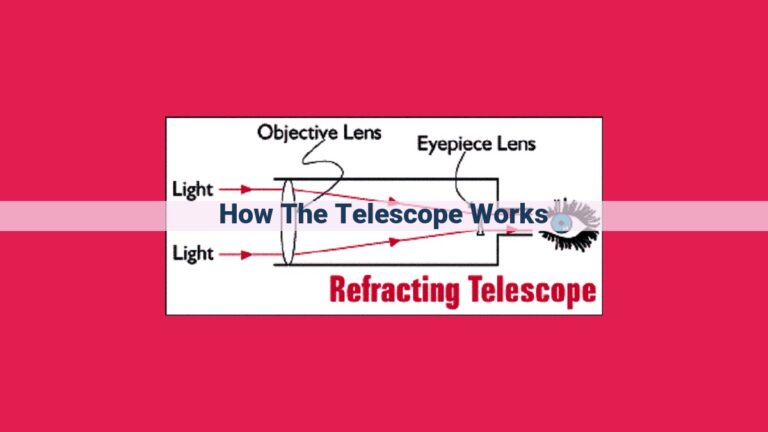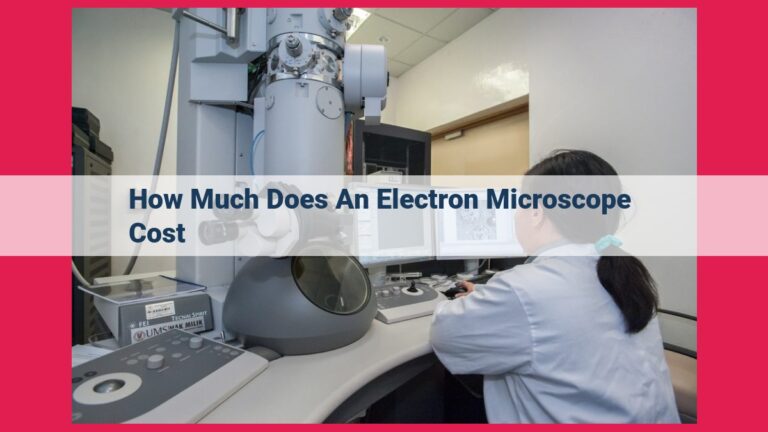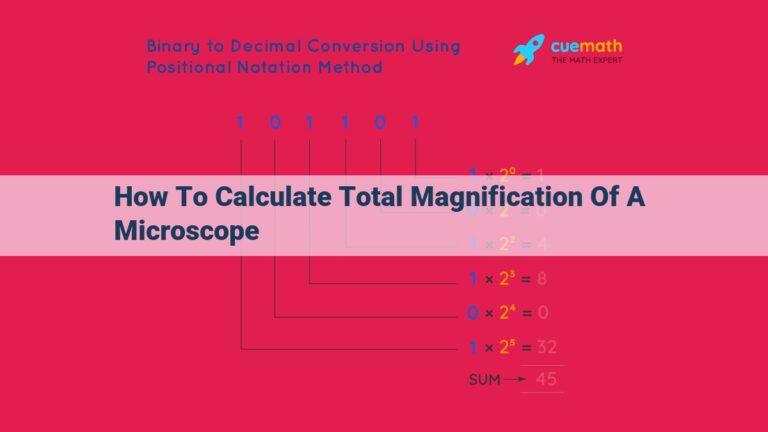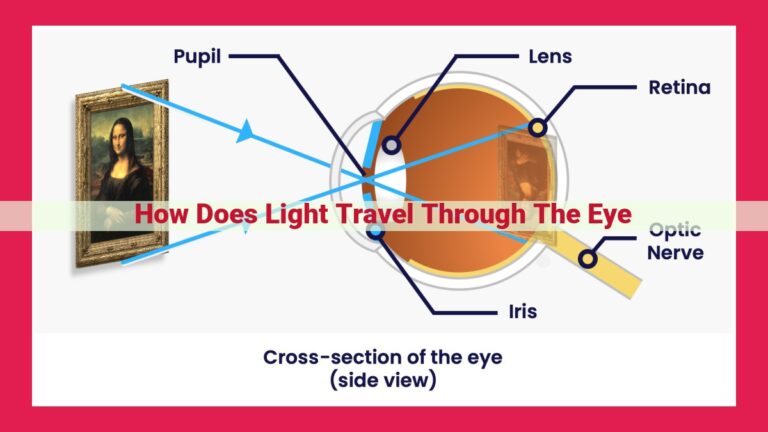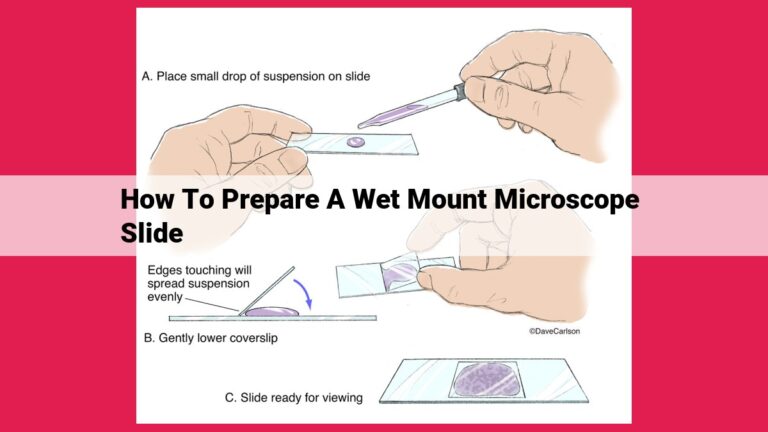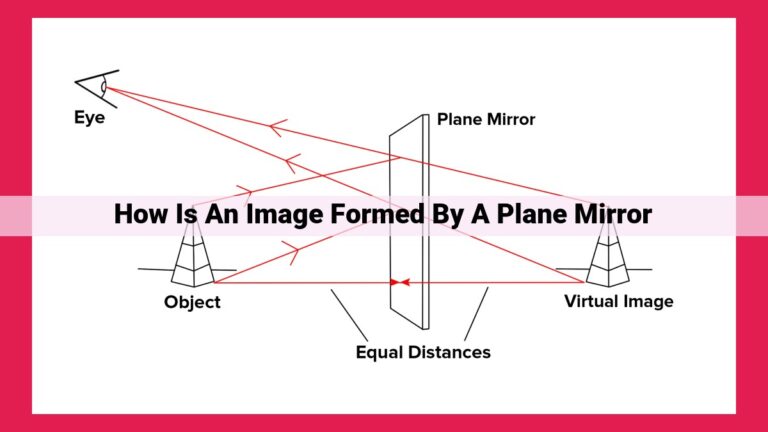Understanding Microscope Magnification: Objective, Eyepiece, And Tube Length
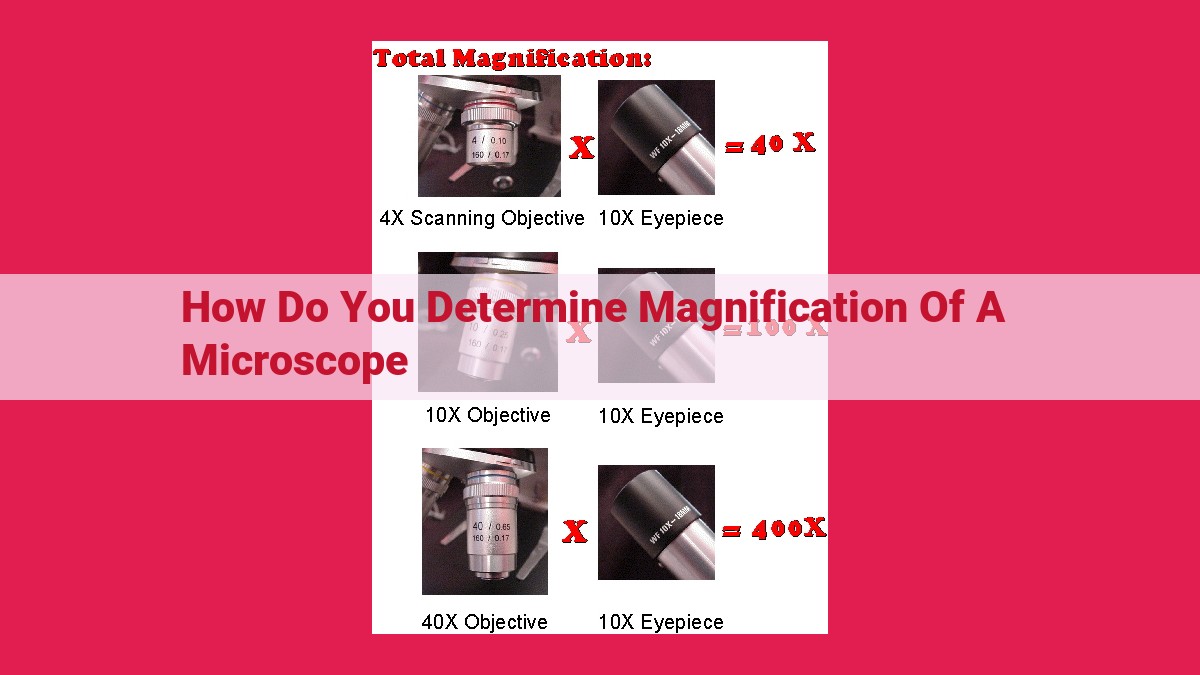
Magnification in microscopy is determined by the contributions of the objective and eyepiece lenses. The objective lens focuses light on the specimen, its focal length and numerical aperture influencing its magnification. The eyepiece lens further magnifies the image, with its magnification factor playing a role. Tube length, the distance between the lenses, affects overall magnification. By multiplying the magnification factors of the objective and eyepiece lenses, we can calculate the total magnification of the microscope, which determines the level of detail visible in the specimen.
- Define magnification and its importance in microscopy.
- Explain the concepts of image size, object size, and magnification factor.
Understanding Magnification in Microscopy: A Journey to See the Unseen
Microscopy, the art of observing the miniature, has revolutionized our understanding of the microscopic world. Magnification lies at the heart of this technique, allowing us to magnify tiny specimens, bringing them into sharp focus and revealing details invisible to the naked eye.
The Power of Magnification
Magnification is the process of enlarging an image, making it appear larger than its actual size. In microscopy, magnification plays a crucial role as it allows us to study specimens that are too small to be seen with our unaided vision. Image size, the size of the enlarged image, is directly proportional to the magnification factor, which is the ratio of the image size to the actual size of the specimen.
The Objective Lens: Guiding Light
The objective lens, located at the bottom of the microscope, is responsible for gathering light from the specimen and focusing it onto the image plane. Focal length, the distance between the lens and the point where the light rays converge, and numerical aperture, a measure of the lens’s ability to collect light, both influence the magnification. A shorter focal length and higher numerical aperture result in higher magnification.
The Eyepiece Lens: Enlarging the Image
The eyepiece lens, located at the頂部of the microscope, further magnifies the image from the objective lens. Field of view, the area of the specimen that is visible through the eyepiece, is also influenced by the eyepiece lens. A wider field of view allows for a larger area to be observed at once.
Tube Length: Connecting the Lenses
Tube length, the distance between the objective lens and the eyepiece lens, is another important factor in microscope design. It affects the image distance, the distance between the image plane and the eyepiece lens, and the object distance, the distance between the specimen and the objective lens. Correct tube length ensures a well-focused image.
The Role of the Objective Lens in Magnification
In the realm of microscopy, the objective lens plays a pivotal role in shaping the magnified image we observe. It is responsible for gathering light from the specimen and focusing it onto the image plane. The properties of this lens determine several key aspects of the magnified image, including magnification, numerical aperture, and resolution.
Magnification: The Power to Enlarge
Focal length is a crucial determinant of magnification. The shorter the focal length (measured in millimeters), the greater the magnification. This concept is directly proportional: as focal length decreases, magnification increases.
Numerical Aperture: Capturing More Details
Numerical aperture (NA) is a measure of the lens’s ability to collect light and resolve details. It depends on the refractive index of the medium between the lens and the specimen, as well as the angle of the cone of light gathered. A higher numerical aperture allows for the collection of more light and the resolution of finer details.
Resolution: Discerning the Minute
Resolution refers to the microscope’s capacity to distinguish between two closely spaced points in the specimen. A higher magnification does not necessarily imply better resolution. Numerical aperture plays a significant role here as well. A higher NA enables the lens to resolve finer details by collecting a wider cone of light.
In essence, the objective lens is the gateway to understanding the hidden world of microscopy. Its ability to magnify, collect light, and resolve details allows us to explore the intricacies of the unseen.
Magnification Contribution of the Eyepiece Lens:
- Explain the function of the eyepiece lens in magnifying the image from the objective lens.
- Discuss the concept of field of view and how it affects the visible area of the specimen.
- Introduce the magnification factor of the eyepiece lens.
Magnification Contribution of the Eyepiece Lens
The eyepiece lens plays a pivotal role in microscopy by magnifying the image created by the objective lens. It acts like a viewing window, allowing us to observe magnified images of the specimen.
Crucially, the field of view (FOV) refers to the area of the specimen that is visible through the eyepiece. A wide FOV enables us to examine a larger specimen area, while a narrow FOV offers higher magnification but limits the visible area. The FOV is determined by the size of the eyepiece lens and the tube length of the microscope.
The magnification factor of the eyepiece lens is typically indicated on its barrel. This factor represents the additional magnification it provides over and above the magnification of the objective lens. Eyepiece lenses commonly come with magnification factors ranging from 5x to 25x.
Choosing the appropriate eyepiece lens depends on the desired magnification and level of detail required for the observation. A higher magnification eyepiece lens will provide a closer view of the specimen but a narrower FOV, whereas a lower magnification eyepiece lens will offer a wider FOV but less magnification.
The Significance of Tube Length in Magnification
Understanding Tube Length
In the intricate world of microscopy, tube length plays a pivotal role in shaping the magnified image we observe. It’s the distance between the objective lens and the eyepiece lens, a crucial factor that influences the overall magnification.
Relationship with Image and Object Distance
Tube length has a profound impact on the relationship between image distance and object distance. Image distance refers to the distance between the objective lens and the image it produces, while object distance is the distance between the objective lens and the specimen being examined.
Impact on Magnification
A shorter tube length shortens the image distance, resulting in a smaller but sharper image. Conversely, a longer tube length increases the image distance, leading to a larger image that may exhibit more aberrations. It’s a balancing act between magnification and clarity.
Implications for Microscope Design
Microscope designers carefully consider tube length to optimize magnification and image quality. Standard tube lengths are established for different types of microscopes, such as 160mm for research microscopes. Maintaining this standard ensures consistent magnification and compatibility with various lenses.
Tube length is an often-overlooked but influential parameter in microscopy, influencing the magnification and quality of the observed image. Understanding its role empowers researchers and enthusiasts to make informed choices when selecting and operating microscopes, maximizing their ability to explore the microscopic world in all its intricate detail.
Unveiling the Magnification of Objective Lenses in Microscopy
In the realm of microscopy, magnification plays a crucial role in revealing the intricate details of specimens. The objective lens, the unsung hero of the microscope, is responsible for capturing the initial magnified image of the specimen. Understanding the factors that influence its magnification is essential for maximizing the potential of your microscope.
Magnification of the Objective Lens
The magnification of an objective lens is determined by its focal length and numerical aperture. The focal length, measured in millimeters, represents the distance between the lens and the specimen when the image is in sharp focus. The smaller the focal length, the greater the magnification.
Another key factor influencing magnification is numerical aperture (NA). NA is a measure of the lens’s ability to gather light and contribute to image resolution. Lenses with higher NA values have greater light-gathering capacity and consequently higher magnification.
The Interplay of Focal Length and Magnification
The relationship between focal length and magnification is inversely proportional. This means that lenses with shorter focal lengths magnify images more than lenses with longer focal lengths. For instance, a 10x objective lens with a focal length of 10 millimeters will produce a more magnified image than a 4x objective lens with a focal length of 40 millimeters.
The Influence of Numerical Aperture on Magnification
Numerical aperture also plays a significant role in magnification. Lenses with higher NA values collect more light from the specimen, resulting in brighter and more detailed images. As NA increases, so does the magnification of the lens. This is because higher NA lenses can resolve smaller details, effectively increasing the perceived magnification.
By understanding the interplay between focal length and numerical aperture, you can select the appropriate objective lens for your specific microscopy needs. Whether you seek to explore the intricacies of biological specimens or unravel the secrets of materials, the objective lens will guide your journey into the microscopic realm.
Magnification of the Eyepiece Lens: A Crucial Aspect in Microscopy
In the world of microscopy, understanding magnification is essential for exploring the intricate details of specimens. The eyepiece lens plays a pivotal role in this process, contributing to the overall magnification of the microscope and enhancing the visibility of even the minutest structures.
The eyepiece lens is located at the top of the microscope, close to the observer’s eye. Its primary function is to further magnify the image formed by the objective lens. The magnification factor of the eyepiece lens, usually etched on its side, indicates the degree to which it enlarges the image from the objective lens.
There are various types of eyepiece lenses available, each with a specific magnification factor. Common types include:
- Huygens: 5x to 10x magnification
- Ramsden: 5x to 10x magnification
- Compensating: 7x to 12.5x magnification
The choice of eyepiece lens depends on the desired magnification and the field of view, which refers to the area of the specimen that can be observed at once. A higher magnification factor provides a closer view of the specimen but reduces the field of view. Conversely, a lower magnification factor offers a broader view but with less detail.
It’s important to note that the magnification of the eyepiece lens is only a part of the overall magnification of the microscope. The objective lens also contributes to the final magnification, and the total magnification is calculated by multiplying the magnification factors of both lenses. Understanding the role and magnification of the eyepiece lens is crucial for optimizing microscope performance and obtaining clear, detailed images of microscopic specimens.
Calculating Total Magnification:
- Introduce the concept of total magnification as the overall magnification of the microscope.
- Provide the formula for calculating total magnification.
- Explain the significance of total magnification in determining the observable details of the specimen.
Magnification in Microscopy: Unraveling the Secrets of the Microscopic World
Embark on a journey into the realm of microscopy, where magnification unveils the intricate details of the unseen world. This fundamental concept empowers scientists, researchers, and enthusiasts alike to explore the hidden wonders that lie just beyond the naked eye.
The Role of the Lenses: Capturing and Magnifying
At the heart of a microscope lies the objective lens, responsible for focusing light onto the specimen. Its focal length and numerical aperture dictate its magnification factor, determining the image’s size relative to the object being viewed. The eyepiece lens then further magnifies this image, presenting it to the observer’s eye.
Understanding Tube Length: Linking Magnification and Distance
Tube length, a crucial design parameter, affects the relationship between the objective lens, the eyepiece lens, and the resulting magnification. By adjusting this distance, microscope designers fine-tune the image clarity and magnification.
Determining Objective Lens Magnification
The magnification of an objective lens is inversely proportional to its focal length, with higher magnification achieved by shorter focal lengths. Numerical aperture, a measure of the lens’ ability to gather light, also influences magnification.
Eyepiece Lens Magnification
Eyepiece lenses come in various types and magnification factors. Their magnification complements that of the objective lens, contributing to the total magnification of the microscope.
Calculating Total Magnification: Unveiling the Whole Picture
Total magnification, the product of objective lens magnification and eyepiece lens magnification, represents the overall magnification of the microscope. It determines the level of detail observable in the specimen, enabling researchers to distinguish intricate structures and identify minute features.
By understanding the interplay of these components, scientists and hobbyists can harness the power of magnification to explore the boundless wonders of the microscopic realm. From cellular processes to microbial life, the secrets of the unseen world await those who delve into the depths of microscopy.
